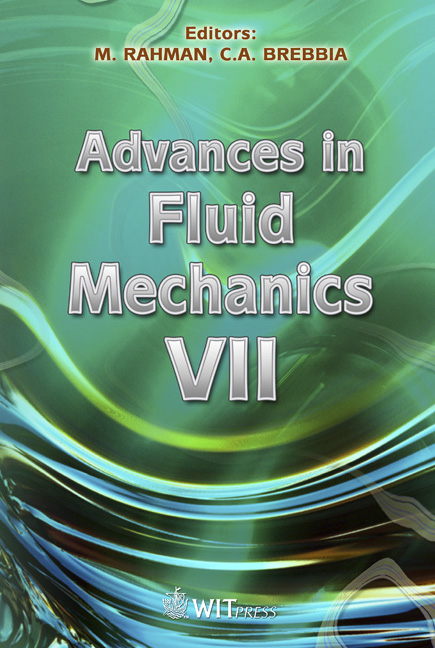Numerical And Experimental Results For The Warming Of Cylindrical Timber Segments
Price
Free (open access)
Transaction
Volume
59
Pages
9
Page Range
191 - 199
Published
2008
Size
482 kb
Paper DOI
10.2495/AFM080191
Copyright
WIT Press
Author(s)
D. A. Gigliotti & P. J. Montgomery
Abstract
As part of an industrial process in the forestry industry, pre-cut segments of debarked logs are conditioned by placing the wood segments in a warm water shower. For wood which is initially cold (or sometimes frozen) and has a relatively high moisture content, the conditioning process results in a net increase in temperature and change in moisture content. As a porous media, wood has a fairly complex structure due to the orientation and sizes of the cells which make up the fibers. In addition, the moisture content of the recently debarked log segments is relatively high, the moisture being almost completely composed of liquid water trapped by capillary forces. Simplistic models which assume a constant moisture content have previously been used to predict conditioning time. However, as is often the case in reality, the complexity of the problem is such that more accurate modelling is desired. To learn more about the conditioning process, preliminary experiments were conducted using a data logger and an array of fifteen thermocouples placed radially at three points on a log segment which was then put through a full conditioning cycle. Theoretical model equations are presented, which take into account both the liquid and vapour components of the water, and spatial averaging is used to create a system of nonlinear partial differential equations. The problem is then simplified through some basic assumptions to pose a set of coupled differential equations for energy and moisture transport in one spatial dimension. A finite difference numerical method is used to solve the initial boundary value problem for the coupled system of nonlinear partial differential equations, and some numerical results are compared to experimental data for the one dimensional problem. Limitations of the model are identified and discussed. Keywords: multiphase flow, porous media, water transport, finite differences.
Keywords
multiphase flow, porous media, water transport, finite differences.





